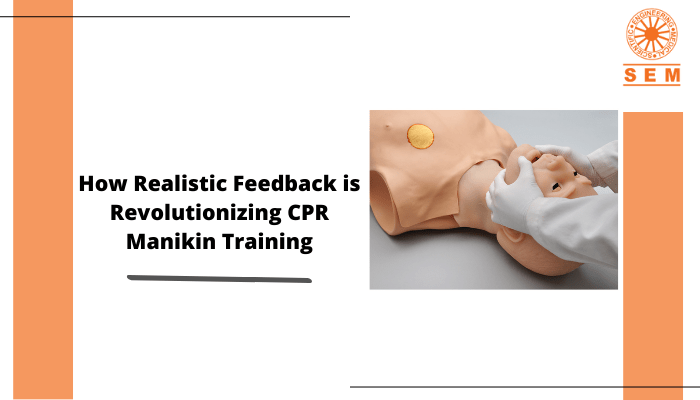How Realistic Feedback is Revolutionizing CPR Manikin Training

Did you know that 9 out of 10 people who have a cardiac arrest outside the hospital die? CPR is a very easy skill to learn, and its quality can be improved by providing real-time feedback.
What is CPR?
Cardiopulmonary resuscitation (CPR) is a life-saving technique used in emergency situations to keep blood and oxygen flowing to vital organs when someone’s heart has stopped beating. It can save a life if their breathing or heart stops. (During a cardiac arrest, a person’s heart stops beating and cannot pump blood to the rest of the body. But in a heart attack, the blood flow to the heart is blocked.)
To ensure that the best possible outcomes are achieved in a real-life scenario, the quality of CPR administered during training is crucial. One essential tool for providing effective CPR training is the use of a realistic feedback device, such as an advanced cardiac life support (ACLS) CPR feedback device, which provides accurate and immediate feedback on the quality of CPR being performed.
Real-time Feedback Device ACLS
ACLS feedback devices are designed to improve the quality of CPR training by providing feedback on key metrics such as compression depth, compression rate, and recoil. These devices are integrated into CPR manikins to provide real-time feedback to trainees on the quality of their compressions and breaths. This feedback is based on the latest American Heart Association (AHA) guidelines for CPR, ensuring that trainees receive the most up-to-date information on proper CPR techniques.
Purpose of the CPR Feedback Device
During CPR training, the feedback device helps trainees learn the proper technique to administer chest compressions and ventilations. It also helps them maintain a consistent rhythm and depth of compressions, which are critical for the success of CPR. Without the use of a feedback device, trainees may not know whether they are administering CPR correctly, which can lead to ineffective training and potentially life-threatening mistakes during real-life emergency situations.
Feedback Functions for Review During CPR
Feedback devices also let trainees review their performance after a CPR training session. They can record and store data, provide graphical representations of CPR performance, and offer suggestions for improvement. By reviewing this data, trainees can identify areas where they need to improve and adjust their technique accordingly. This helps them perform better in future CPR training sessions and ultimately, in real-life situations.
The importance of realistic feedback in CPR manikins cannot be overstated. Using a feedback device is essential for providing effective CPR training and improving the quality of CPR administered during real-life emergencies. Real-time feedback devices, such as ACLS feedback devices, provide trainees with immediate feedback on the quality of their compressions and ventilations, helping them learn and maintain proper CPR technique. They also let them review and identify areas where they need to improve and adjust their technique. Ultimately, using realistic feedback devices in CPR training saves lives by ensuring that trainees are well-prepared to provide high-quality CPR when it matters most.
